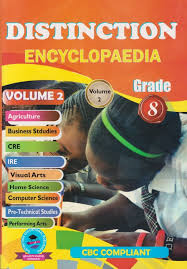Download free Rationalized CBC Grade 8 schemes of work below. The schemes are both in editable word format and PDF.
TERM ONE FREE GRADE 8 SCHEMES OF WORK
GRADE 8 TERM 1 CREATIVE ARTS SPORTS SCHEMES (1).docx
Grade-7-Pre-technical-Studies-Term-II-2025-Schemes-of-Work.pdf
PRETECHNICAL SCHEMES TERM 1 – Copy (3) – Copy – Copy – Copy.docx
Grade-8-Social -Studies-Schemes-of-Work-Term-1-2025.pdf
grade-8-cre-schemes-of-work-term-1–oxford.pdf
grade-8-mathematics-schemes-of-work-term-1.pdf
Grade_8_Set_1_Creative_Arts_Rationalized_Schemes_of_Work_Term_1.pdf
Grade-8-english-schemes-of-work-term-1–longhorn (1).doc
grade-8-mentor-agriculture-schemes-of-work-term-1.docx
grade-8-pre-technical-studies-schemes-of-work-term-1 (1).docx
Grade-8-Pretechnical-Studies-Schemes-of-Work-Term-1-2025.pdf
Grade-2-French-Term-II-2025-Schemes-of-Work.pdf
grade-8-kiswahili-schemes-of-work-term-1.pdf
Grade-8-integrated-science-schemes-of-work-term-1 (1).docx
Grade 8 Set 2 Creative Arts Schemes of Work Term 1.pdf
TERM TWO FREE GRADE 8 SCHEMES OF WORK
Grade-8-Agriculture-Term-II–Schemes-of-Work.pdf
Grade-8-CRE-Term-II–Schemes-of-Work.pdf
Grade-8-Creative-Arts-Term-II–Schemes-of-Work.pdf
Grade-8-English-Term-II–Schemes-of-Work.pdf
Grade-8-French-Term-II–Schemes-of-Work.pdf
Grade-8-Integrated-Science-Term-II–Schemes-of-Work.pdf
Grade-8-Kiswahili-Term-II–Schemes-of-Work.pdf
Grade-8-Mathematics-Term-II–Schemes-of-Work.pdf
Grade-8-Pre-technical-Studies-Term-II–Schemes-of-Work.pdf
Grade-8-Social-Studies-Term-II–Schemes-of-Work.pdf
Grade-8-mtp-Agriculture-and-Nutrition-Schemes-of-work-Term-2 (2).pdf
GRADE_8_TERM_2_RATIONALIZED_PRE_TECHNICAL_STUDIES_SCHEMES_OF.pdf
GRADE_8_TERM_2__RATIONALIZED_PRE_TECHNICAL_STUDIES_SCHEMES_OF (2).pdf
GRADE_8_TERM_2__MENTOR_INTEGRATED_SCIENCE_SCHEMES_OF_WORK.pdf
GRADE_8_TERM_2__MENTOR_INTEGRATED_SCIENCE_SCHEMES_OF_WORK (2).pdf
GRADE_8_TERM_2_RATIONALIZED_PRE_TECHNICAL_STUDIES_SCHEMES_OF (3).pdf
GRADE_8_TERM_2__MENTOR_INTEGRATED_SCIENCE_SCHEMES_OF_WORK (3).pdf
GRADE_7_TERM_2_RATIONALIZED_PRETECHNICAL_SCHEMES_OF_WORK_2024 (3).pdf
GRADE 8 TERM 2 CREATIVE ARTS SCHEMES-1 (2).pdf
GRADE 8 TERM 2 CRE SCHEMES.doc
GRADE 8 TERM 2 AGRI NUTRITION SCHEMES.doc
GRADE 8 TERM 2 2AGRI NUTRITION SCHEMES OF WORK (3).pdf
GRADE 8 TERM 2 RATIONALIZED ENGLISH SCHEMES OF WORK (3).pdf
GRADE 8 TERM 2 MTP SOCIAL STUDIES SCHEMES OF WORK (4).pdf
GRADE 8 TERM 2 MTP SOCIAL STUDIES SCHEMES OF WORK (3).pdf
GRADE 8 TERM 2 MENTOR CRE SCHEMES OF WORK (3).pdf
GRADE 8 CURRICULUM DESIGNS- LIFE SKILLS (2).pdf
GRADE 8 CURRICULUM DESIGNS- KISWAHILI-2.pdf
GRADE 8 CURRICULUM DESIGNS- KISWAHILI (2).pdf
GRADE 8 CURRICULUM DESIGNS- INTEGRATED SCIENCE-1.pdf
GRADE 8 CURRICULUM DESIGNS- HOME SCIENCE (2).pdf
GRADE 8 CURRICULUM DESIGNS- ENGLISH (2).pdf
GRADE 8 CURRICULUM DESIGNS- BUSINESS STUDIES (2).pdf
G8 SOCIAL STUDIES (2).pdf
G8 pretechnical NOTES-1.pdf
G8 pretechnical NOTES-1 (2).pdf
G8 CREATIVE ARTS & SPORTS.pdf
G8 CREATIVE ARTS & SPORTS-2.pdf
G8 CREATIVE ARTS & SPORTS-2 (2).pdf
G8 CREATIVE ARTS & SPORTS (2).pdf
GRADE 8 TERM 2 CRE SCHEMES.doc
GRADE 8 TERM 2 AGRI NUTRITION SCHEMES.doc
GRADE 8 TERM 2 AGRI NUTRITION SCHEMES OF WORK (3).pdf
GRADE 8 TERM 2 MENTOR CRE SCHEMES OF WORK (3).pdf
GRADE_8_TERM_2__MENTOR_INTEGRATED_SCIENCE_SCHEMES_OF_WORK (3).pdf
GRADE 8 TERM 2 MTP SOCIAL STUDIES SCHEMES OF WORK (4).pdf
GRADE 8 TERM 2 MTP SOCIAL STUDIES SCHEMES OF WORK (3).pdf
GRADE 8 TERM 2 AGRI NUTRITION SCHEMES OF WORK (2).pdf
GRADE 8 TERM 2 AGRI NUTRITION SCHEMES OF WORK.pdf
GRADE 8 TERM 2 MENTOR CRE SCHEMES OF WORK (2).pdf
GRADE 8 TERM 2 MENTOR CRE SCHEMES OF WORK.pdf
GRADE_8_TERM_2__MENTOR_INTEGRATED_SCIENCE_SCHEMES_OF_WORK (2).pdf
GRADE_8_TERM_2__MENTOR_INTEGRATED_SCIENCE_SCHEMES_OF_WORK.pdf
GRADE 8 TERM 2 MTP SOCIAL STUDIES SCHEMES OF WORK (2).pdf
GRADE 8 TERM 2 MTP SOCIAL STUDIES SCHEMES OF WORK.pdf
GRADE 8 TERM 2 AGRI NUTRITION SCHEMES OF WORK.pdf
GRADE 8 TERM 2 AGRI NUTRITION SCHEMES OF WORK.doc
GRADE 8 TERM 2 MENTOR CRE SCHEMES OF WORK.pdf
GRADE_8_TERM_2__MENTOR_INTEGRATED_SCIENCE_SCHEMES_OF_WORK.pdf
GRADE 8 TERM 2 2024 MTP SOCIAL STUDIES SCHEMES OF WORK.pdf
GRADE_8_TERM_2_RATIONALIZED_PRE_TECHNICAL_STUDIES_SCHEMES_OF (3).pdf
GRADE_8_TERM_2_2024_RATIONALIZED_PRE_TECHNICAL_STUDIES_SCHEMES_OF (2).pdf
GRADE_8_TERM_2__RATIONALIZED_PRE_TECHNICAL_STUDIES_SCHEMES_OF.pdf
GRADE_8_TERM_2__RATIONALIZED_PRE_TECHNICAL_STUDIES_SCHEMES_OF.pdf
GRADE 8 TERM 2 RATIONALIZED ENGLISH SCHEMES OF WORK (2).pdf
GRADE 8 TERM 2 RATIONALIZED ENGLISH SCHEMES OF WORK.pdf
GRADE 8 TERM 2 RATIONALIZED ENGLISH SCHEMES OF WORK.pdf
GRADE 8 TERM 2 CREATIVE ARTS SCHEMES-1 (2).pdf
GRADE 8 TERM 2 CREATIVE ARTS SCHEMES-1.pdf
Grade-8-mtp-Agriculture-and-Nutrition-Schemes-of-work-Term-2 (3).pdf
GRADE-8-RATIONALIZED-FRENCH-SCHEME-OF-WORK-TERM-22024-TEACHER.CO_.KE_.docx
grade-8-rationalised-social-studies-schemes-of-work-term-2-updated.docx
GRADE-8-TERM-2-ENGLISH-SCHEMES-skills.docx
GRADE-8-TERM-2-ENGLISH-SCHEMES.docx
GRADE-8-TERM-2-FRENCH-SCHEMES.docx
GRADE-8-TERM-2-KISWAHILI-SCHEMES.docx
GRADE-8-TERM-2-MATHEMATICS-SCHEMES.doc
GRADE-8-TERM-2-PRETECHNICAL-SCHEMES.docx
GRADE-8-TERM-2-SCIENCE-SCHEMES-spotlight.docx
GRADE-8-TERM-2-SCIENCE-SCHEMES.docx
GRADE-8-TERM-2-SCIENCE-SCHEMES-mentor.doc
GRADE-8-TERM-2-SOCIAL-STUDIES-SCHEMES.docx
GRADE-8-TERM-2-SOCIAL-STUDIES-SCHEMES-1.docx
grade-8-integrated-science-schemes-of-work-term-2-active-integrated-science.docx
grade-8-integrated-science-schemes-of-work-term-2-mentor.doc
grade-8-klb-top-scholar-mathematics-schemes-of-work-term-2.doc
grade-8-pre-technical-studies-schemes-of-work-term-2-merged.docx
grade-8-rationalised-agriculture-and-nutrition-schemes-of-work-term-2-mtp-updated.docx
grade-8-rationalised-agriculture-and-nutrition-schemes-of-work-term-2-mtp-updated-1.docx
grade-8-rationalised-social-studies-schemes-of-work-term-2-updated (1).docx
grade-8-rationalised-spotlight-integrated-science-schemes-of-work-term-2.docx
grade-8-rationalized-english-schemes-of-work-term-2-skills-in-english.docx
grade-8-rationalized-french-scheme-of-work-term-2.docx
grade-8-rationalised-creative-arts-and-sports-schemes-of-work-term-2.docx
grade-8-rationalised-cre-schemes-of-work-term-2-mentor.docx
grade-8-rationalised-kiswahili-schemes-of-work-term-2-akili-pevu.docx
grade-8-rationalised-smart-minds-english-schemes-of-work-term-2.docx
GRADE-8-TERM-2-SOCIAL-STUDIES-SCHEMES2024-TEACHER.CO_.KE_.doc
GRADE-8-TERM-2-PRETECHNICAL-SCHEMES2024-TEACHER.CO_.KE_.doc
GRADE-8-TERM-2-MATHEMATICS-SCHEMES-KLB-12024-TEACHER.CO_.KE_.docx
TERM 1-3 FREE GRADE 8 SCHEMES OF WORK
GRADE-8-RATIONALIZED-FRENCH-SCHEME-OF-WORK-TERM-2
grade-8-rationalised-social-studies-schemes-of-work-term-2-updated.docx
GRADE-8-TERM-2-ENGLISH-SCHEMES-skills.docx
GRADE-8-TERM-2-ENGLISH-SCHEMES.docx
GRADE-8-TERM-2-FRENCH-SCHEMES.docx
GRADE-8-TERM-2-KISWAHILI-SCHEMES.docx
GRADE-8-TERM-2-MATHEMATICS-SCHEMES.doc
GRADE-8-TERM-2-PRETECHNICAL-SCHEMES.docx
GRADE-8-TERM-2-SCIENCE-SCHEMES-spotlight.docx
GRADE-8-TERM-2-SCIENCE-SCHEMES.docx
GRADE-8-TERM-2-SCIENCE-SCHEMES-mentor.doc
GRADE-8-TERM-2-SOCIAL-STUDIES-SCHEMES.docx
GRADE-8-TERM-2-SOCIAL-STUDIES-SCHEMES-1.docx
grade-8-rationalised-agriculture-and-nutrition-schemes-of-work-term-2-mtp-updated-1.docx
grade-8-rationalised-social-studies-schemes-of-work-term-2-updated (1).docx
grade-8-rationalized-english-schemes-of-work-term-2-skills-in-english.docx
grade-8-rationalized-french-scheme-of-work-term-2.docx
grade-8-rationalised-cre-schemes-of-work-term-2-mentor.docx
GRADE-8-TERM-2-MATHEMATICS-SCHEMES-KLB-1
GRADE-8-MENTOR-HOME-SCIENCE-SCHEMES-OF-WORK-TERM-1
GRADE-8-PHYSICAL-EDUCATION-AND-SPORTS-SCHEMES-OF-WORK-TERM-1-JKF
GRADE-8-HINDU-SCHEMES-OF-WORK-TERM-12024-
GRADE-8-SOCIAL-STUDIES-SCHEMES-OF-WORK-TERM-1-KLB-TOP-SCHOLAR2024-
GRADE-8-INTEGRATED-SCIENCE-SCHEMES-OF-WORK-TERM-12024-
GRADE-8-MENTOR-AGRICULTURE-SCHEMES-OF-WORK-TERM-1
GRADE-8-MATHEMATICS-SCHEMES-OF-WORK-TERM-1-SMART-MINDS
GRADE-8-INDIGENOUS-LANGUAGES-SCHEMES-OF-WORK-TERM-1
GRADE-8-PERFORMING-ARTS-SCHEMES-OF-WORK-TERM-1-OXFORD
GRADE 8 LAST TERM 2.docx
grade-8-hindu-schemes-of-work-term-1-1.docx
GRADE-8-TERM-1-PRETECHNICAL-SCHEMES-MENTOR
GRADE-8-IRE-SCHEMES-OF-WORK-TERM-1-OXFORD
grade-8-rationalized-agriculture-and-nutrition-schemes-of-work-term-3.docx
GRADE-8-TERM-1-CREATIVE-ARTS-SPORTS-SCHEMES
grade-8-rationalized-kiswahili-schemes-of-work-term-1-klb-top-scholar.docx
GRADE-8-VISUAL-ARTS-SCHEMES-OF-WORK-TERM-1-KLB-TOP-SCHOLAR
grade-8-rationalized-mathematics-schemes-of-work-term-1-klb-top-scholar.docx
grade-8-rationalized-integrated-science-schemes-of-work-term-3-spotlight.docx
grade-8-rationalized-integrated-science-schemes-of-work-term-1.docx
grade-8-mentor-c-r-e-schemes-of-work-term-3-rationalised.docx
GRADE-8-AGRICULTURE-SCHEMES-TERM-1
GRADE-8-FRENCH-SCHEMES-OF-WORK-TERM-1
GRADE-8-TERM-2-INTEGRATED-SCIENCE-SCHEMES-MENTOR
grade-8-rationalized-social-studies-schemes-of-work-term-3.docx
grade-8-rationalised-kiswahili-schemes-of-work-term-2-akili-pevu (1).docx
grade-8-rationalized-creative-arts-and-sports-schemes-of-work-term-3.docx
grade-8-rationalized-pre-technical-studies-schemes-of-work-term-1-klb-top-scholar.docx
grade-8-german-schemes-of-work-term-1.docx
grade-8-rationalized-agriculture-and-nutrition-schemes-of-work-term-1.docx
grade-8-french-schemes-of-work-term-1.docx
